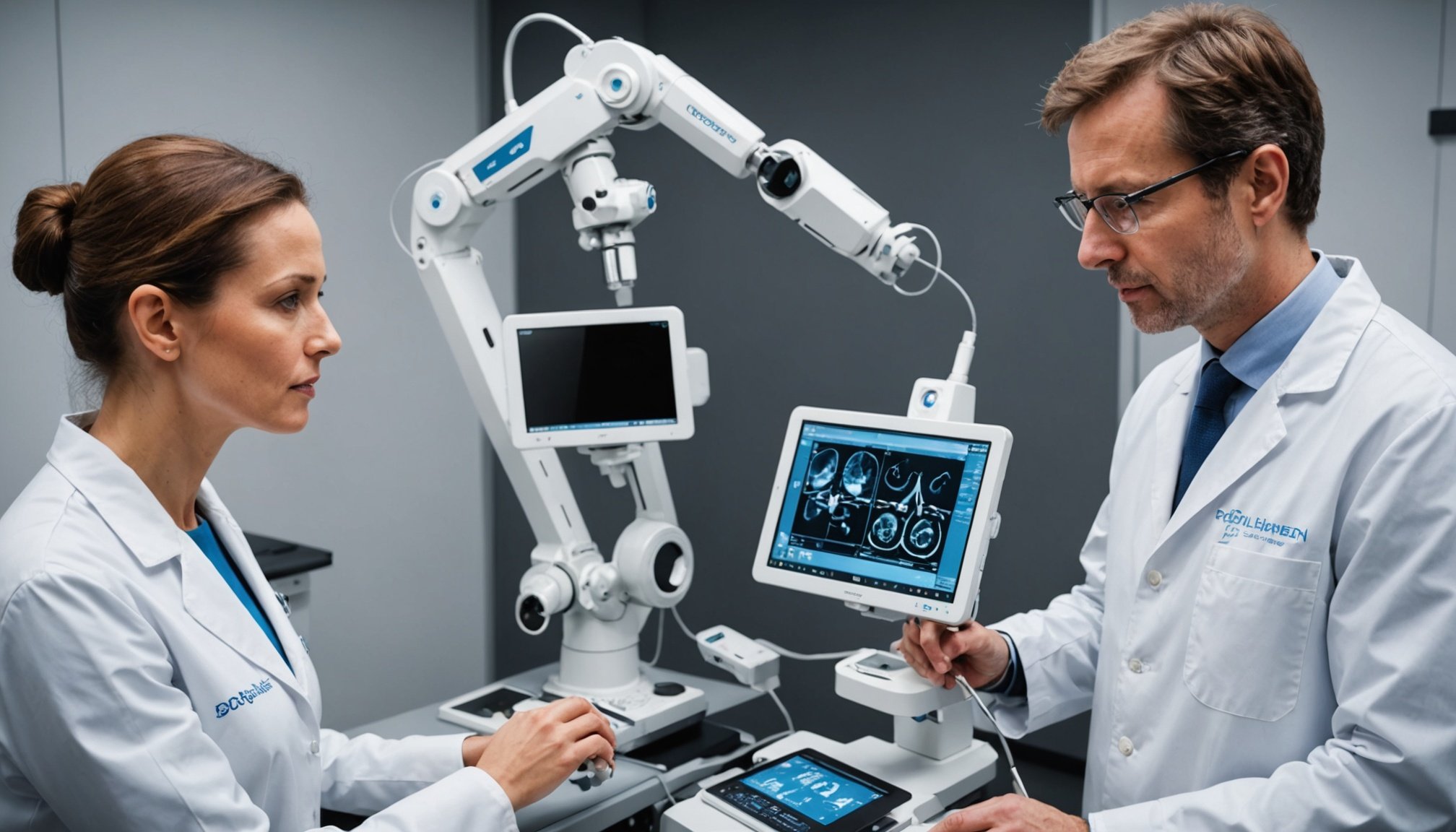Overview of Robotic Innovations in Gynecological Surgery
Robotic gynecological surgery represents a significant leap forward in the field of surgical technology advancements. These surgical robotics are redefining how procedures are performed, particularly in the UK, by enhancing precision and improving patient outcomes. At the core of these innovations is the ability to perform minimally invasive surgeries with enhanced dexterity and control.
The latest technological advancements in surgical robots include state-of-the-art systems equipped with high-definition cameras and advanced surgical instruments. These features provide surgeons with superior vision and maneuverability, minimizing the invasiveness of procedures. Innovations such as the da Vinci system have become synonymous with robotic gynecological surgery, offering unparalleled precision and a greater range of motion than traditional methods.
However, robotic systems do come with some limitations. Their high cost and the need for specialized training pose challenges to widespread adoption. Furthermore, the technology depends heavily on the surgeon’s expertise, which can affect its effectiveness.
Despite these challenges, the benefits of robotic techniques continue to drive interest. The ability to offer patients shorter recovery times, reduced pain, and fewer complications is a testament to their transformative impact on modern gynecological procedures. This balance of advantages and limitations continues to shape the future of surgical robotics in gynecology.
Have you seen this : Transformative strategies for uk teen health professionals to tackle the rising wave of adolescent mental health issues
Key Technologies in Robotic Gynecological Surgery
In the realm of robotic gynecological surgery, cutting-edge technologies are playing a pivotal role. These robotic surgery technologies are crafted to provide precision and flexibility, enhancing the capabilities of surgeons.
da Vinci Surgical System
The da Vinci Surgical System stands as a leader among robotic platforms, offering surgeons unparalleled control for minimally invasive surgery. This system utilises intuitive control mechanisms, allowing for movements that mimic human hand motions with enhanced precision. Its design integrates 3D high-definition vision with tiny surgical instruments that twist and bend far beyond the limits of the human hand. The system’s capability to perform delicate procedures with minimal incisions significantly reduces risk and enhances recovery times for patients.
Versatility of Robotic Platforms
Beyond the da Vinci, other robotic systems offer various degrees of versatility. These platforms are designed to cater to different surgical needs, providing options for customised handling and broader surgical applications. Key attributes include adaptability to various procedures and enhanced surgeon ergonomics, which collectively lead to improved patient outcomes.
Future Technological Trends
Future innovations are on the horizon, promising to further revolutionise robotic-assisted surgery. Upcoming advancements include smart instrumentation that offers real-time feedback and automation features, potentially reducing human error. These technological advancements could transform traditional surgical techniques, making procedures safer and more efficient.
Case Studies Showcasing Robotic Innovations
Robotic gynecological surgery has significantly transformed how surgeries are conducted by minimising invasiveness and enhancing precision. This section delves into specific surgical case studies, highlighting the outcomes and patient benefits.
One compelling study detailed a series of robotic-assisted hysterectomies performed with minimal operative time and reduced patient recovery periods. In these cases, robotic surgery outcomes notably featured shorter hospital stays, averaging two days compared to five with traditional surgery. Patients reported less postoperative pain and faster return to daily activities. This improvement in recovery is a marked advantage, exemplifying the patient benefits of robotic interventions over conventional methods.
In another case, a robotic myomectomy significantly decreased blood loss and reduced the risk of complications, showcasing the system’s ability to effectively manage risks. The precision of surgical robots ensures that delicate structures are preserved, preventing inadvertent damage.
These examples demonstrate robotics’ potential in enhancing patient safety and surgical efficiency. The innovation lies not just in technolog, but in the remarkable outcomes these systems achieve. While conventional surgery has its merits, robotic surgery provides unique opportunities for safer, efficient, and patient-centric care. This promising shift encourages a broader application in gynecological studies and beyond.
Expert Insights and Recommendations
Gaining insights from leading surgeons and experts in robotic gynecological surgery offers invaluable perspectives on best practices. These opinions highlight how to seamlessly integrate robotic surgery into modern medical practices.
Interviews with Leading Surgeons
Through extensive interviews with UK surgeons experienced in robotic-assisted procedures, several trends emerge. Surgeons emphasise the importance of comprehensive training and ongoing education to maximise the effectiveness of robotic technologies. Key insights reveal that hands-on experience and simulation training significantly enhance the surgeon’s proficiency.
Insights from Surgical Conferences
International surgical conferences further provide a platform for sharing advancements and methodologies in robotic surgery. These gatherings are instrumental in disseminating pioneering research and breakthrough innovations. A notable observation is the trend towards incorporating artificial intelligence for more precise surgical planning and execution.
Best Practices for Implementation
To adopt best practices in robotic systems, it is crucial to develop structured training programs and institutional support. Recommendations include:
- Establishing multidisciplinary teams that foster collaboration.
- Implementing continuous learning opportunities, such as workshops and seminars.
- Encouraging peer-to-peer mentorship to refine techniques.
By following these practices, healthcare institutions can optimise the integration of robotic surgery, ensuring sustainable and effective use of these transformative technologies.
Guidelines for Implementing Robotic Surgery in the UK
Implementing robotic surgery within the UK healthcare system presents numerous opportunities and requirements. Recognising these, a comprehensive step-by-step guide can facilitate successful adoption of this innovative technology.
To begin with, institutions should focus on clearly defining implementation guidelines. These should include assessing the specific needs of their surgical departments and evaluating the available robotic platforms. Hospitals must ensure alignment with healthcare policies and quality standards, establishing a solid foundation for integrating robotic systems.
Training and resources are pivotal for surgeons to gain proficiency in robotic techniques. A structured approach involving initial hands-on training, followed by advanced workshops, can optimise surgeon performance. Additionally, acquiring accreditation through professional bodies assures adherence to best practices and safety standards.
The UK healthcare system offers various resources to support continuous education in surgical robotics. These resources include simulation centres, online courses, and interactive seminars, each designed to keep practitioners updated with the latest technological developments.
By adopting a careful and strategic approach, healthcare institutions can maximise the benefits of robotic surgery, ensuring improved patient outcomes while minimising risks. A commitment to ongoing education and support further solidifies the promising future of robotic-assisted procedures in UK healthcare.

